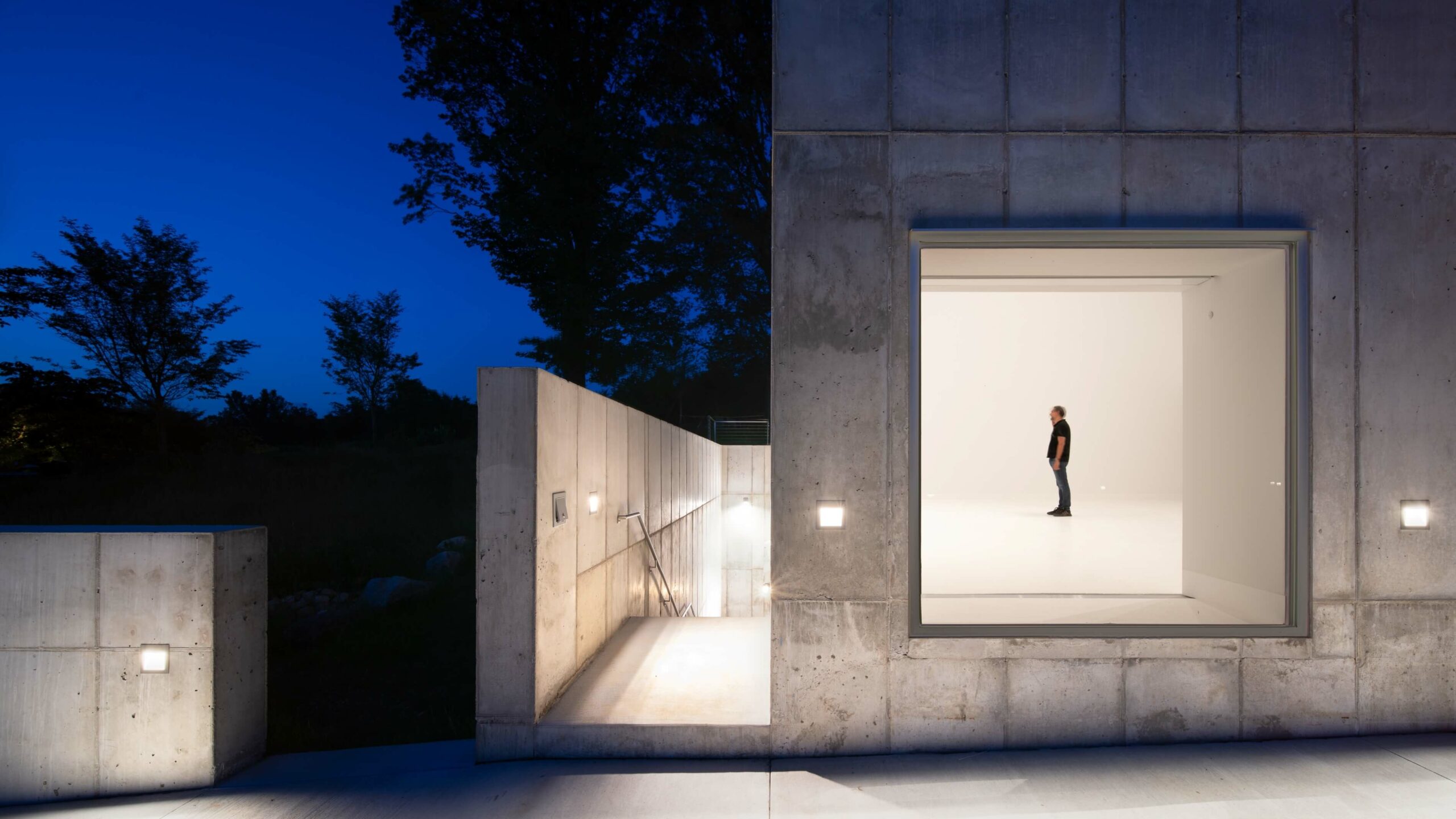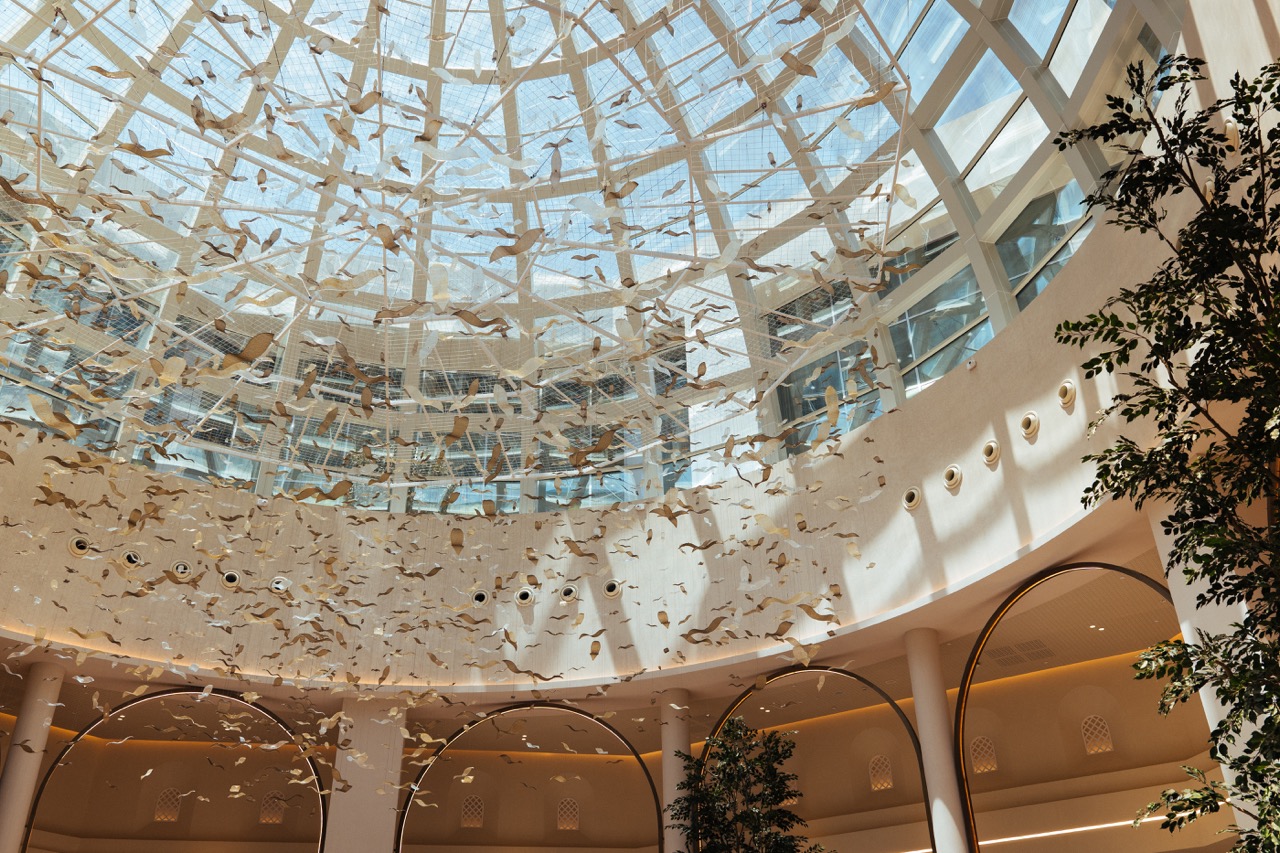Located in Cold Spring, New York, The Robert Olnick Pavilion is a building designed by the Spanish architects Alberto Campo Baeza and Miguel Quismondo. The second building on Magazzino’s campus has a humble layout highlighting industrial materials and an aesthetically neutral environment. The new construction provides an additional 13,000 square feet of new exhibition space.
With architectural lighting by Map Design Studio, The Robert Olnick Pavilion has a sunken garden which is the exterior extension of the basement multi-purpose room. It acts as a space of congregation extending the experience from the inside out. The lighting emphasizes the relationship between the interior and exterior and creates a dramatic backdrop to the space.
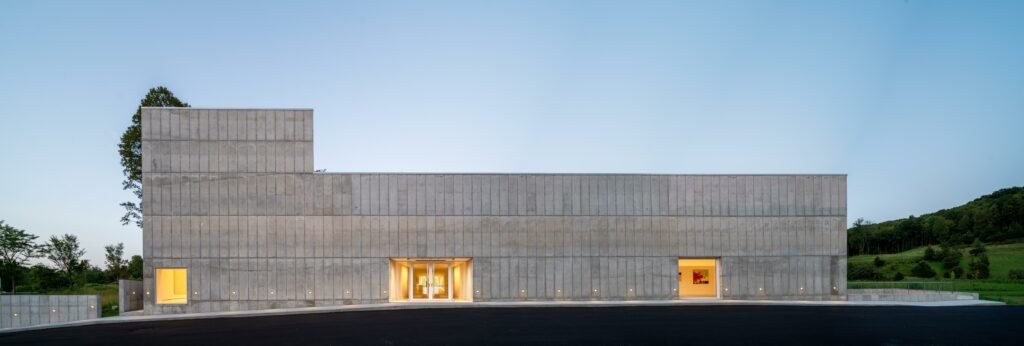

Map Design Studio uses light as a medium to transform spaces and reveal their aesthetic qualities. Through the use of light, the team creates a visual hierarchy and defines the atmosphere within the built environment. The expertise of the designers spans various types of projects and uses creative design approaches integrated with knowledge of lighting technologies, control systems, LEED certification, and energy compliance.
Artemis Papadatou, the lead designer of the project, focused on perfectly blending luminaires with minimal architecture. Galleries are softly and uniformly lit, with low-glare luminaires installed in tracks for full flexibility. The light sources used allow for shadow-free art wall illumination. This is the case because of the precise light source placement from the gallery walls.
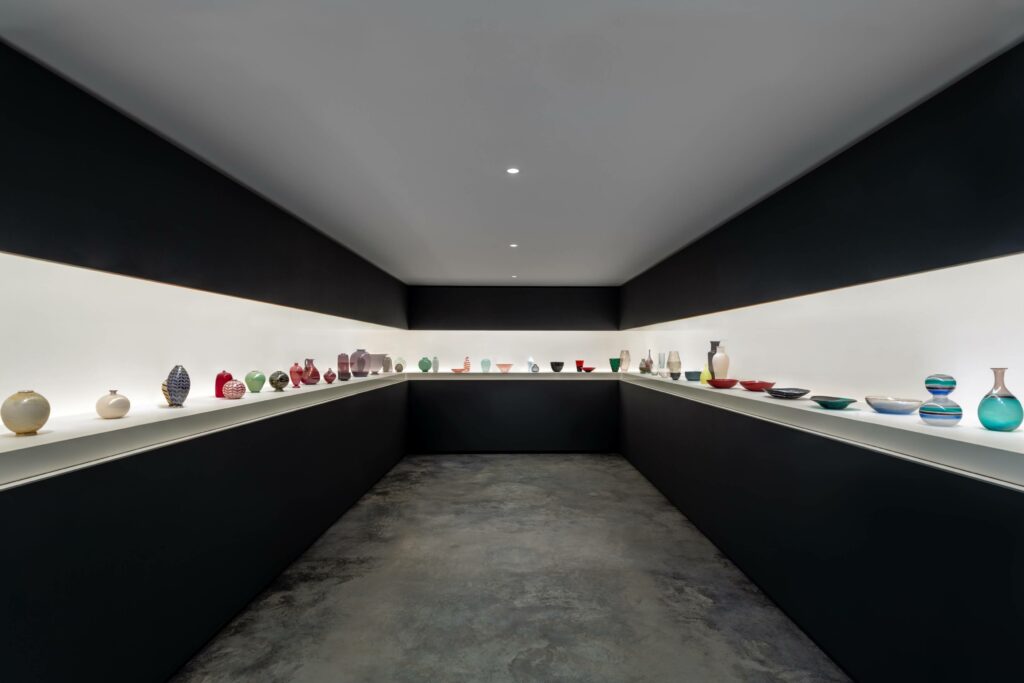
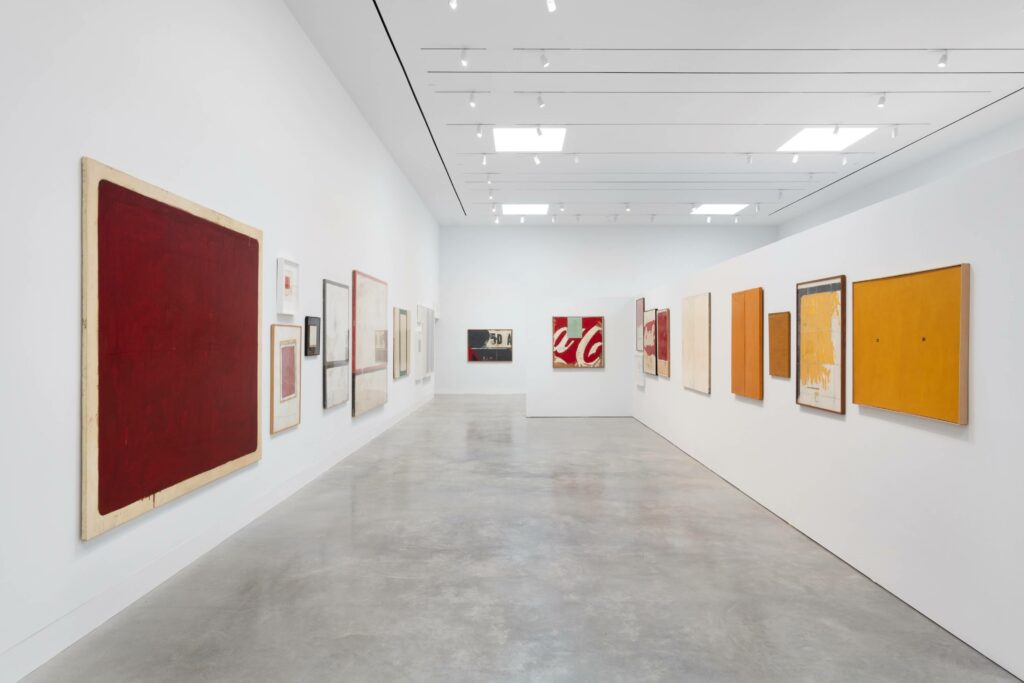
Inside the museum, the café and shop have millwork-integrated lighting to celebrate the intended relaxing nature of the space, from where anyone can marvel at the landscape.
In addition to this, low-level and low-glare step lights were installed around the exterior of the building to provide path illumination, and nighttime security and to remain respectful to the wildlife of the campus.
This project was awarded the LIT Lighting Design Award for the best Visitor Experience & Museum Exhibition.
Photo Credits: William Mulvihill Courtesy of MQ Architecture, Tommaso Sacconi & Marco Anelli






